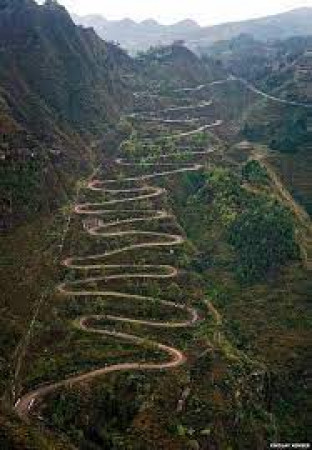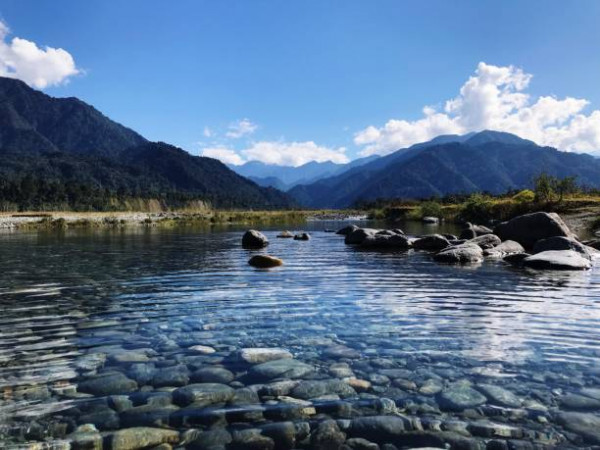
Changlang
Duration
3 to 5 Days
3 to 5 Days
Best time to visit
Oct-Jan
Oct-Jan
Theme
Hill Station, Adventure, Wildlife
Hill Station, Adventure, Wildlife
Changlang Travel Guide
Changlang, located in the northeastern state of Arunachal Pradesh, India, is a hidden gem waiting to be explored. This region is known for its rich tribal culture, stunning landscapes, and diverse wildlife. Changlang is famous for its lush greenery, tea plantations, and unique tribal festivals that showcase the vibrant heritage of the region.Top Attractions in Changlang
- Namdapha National Park
- Miao Mini Zoo
- Pang Sua Wildlife Sanctuary
- River Noa-Dehing
- Buddhist Monasteries
Changlang is Famous for
Tea plantations and tribal festivals.Top Attractions in Changlang
- Explore Namdapha National Park
- Visit the Miao Mini Zoo
- Experience Pang Sua Wildlife Sanctuary
- Enjoy a boat ride on River Noa-Dehing
- Immerse in the serenity of Buddhist Monasteries
What's Great about Travelling to Changlang?
- Experience authentic tribal culture
- Explore diverse wildlife
- Enjoy the serene beauty of tea plantations
What's Not So Great about Travelling to Changlang?
- Limited tourist infrastructure
- Remote location
- Language barriers with tribal communities
Travel Tips for Changlang
- Obtain Inner Line Permit for entry
- Hire a local guide for better exploration
- Respect local customs and traditions
Important Changlang trip information
- Ideal Duration: 3-4 days
- Best Time to Visit: October to March
- Nearby Airports and Railway Stations: Dibrugarh Airport and Tinsukia Railway Station
Top 6 Places to visit in Changlang
FAQ's on Changlang
Q1: What is the best time to visit Changlang?
experiences a pleasant climate from October to March, making it the best time to visit. During this period, the weather is cool and ideal for exploring the region. However, if you want to witness festivals and cultural events, consider visiting during the festive months of December and January when the locals celebrate with great fervor.
Q2: Do I need a visa to travel to Changlang?
Most visitors to will require a tourist visa. It is advisable to check with the embassy or consulate of the country you are traveling from for specific visa requirements. Some nationalities may be eligible for visa-on-arrival or visa-free entry, but it's essential to confirm this before your trip.
Q3: What are the must-visit attractions in Changlang?
When in , make sure to visit Namdapha National Park, Lake of No Return, Rangfraa Memorial, and Miao. These attractions offer a glimpse into the natural beauty, history, and culture of the region, making your visit truly memorable.
Q4: Is Changlang a safe place to travel?
is generally a safe destination for travelers. However, like any other place, it is advisable to take necessary precautions. Avoid isolated areas at night and be cautious of your belongings. Stay informed about the local news and follow any travel advisories issued by your government.
Q5: What is the local currency in Changlang and can I use credit cards?
The local currency in is the Indian Rupee (INR). While credit cards are accepted in some hotels and larger establishments, it's recommended to carry cash for smaller purchases. ATMs are also available in major towns for your convenience.
Q6: What is the local cuisine like in Changlang?
offers a diverse culinary experience with dishes influenced by various tribes and communities. Don't miss trying local specialties like Thukpa, Momos, and Zan. Vegetarians will also find plenty of options like Aloo Pitika and Bamboo Shoot Curry to savor.
Q7: What transportation options are available in Changlang?
Transportation options in include buses, taxis, and rental services. Public transport is available for intercity travel, while taxis are convenient for shorter distances. You can also opt for car rentals to explore the region at your own pace.
Q8: Are there any cultural norms or etiquette I should be aware of when visiting Changlang?
When visiting , it's important to respect the local customs and traditions. Dress modestly, especially when visiting religious sites. Avoid pointing with your fingers and always seek permission before taking photographs of locals. Greeting with a traditional 'Namaste' is appreciated and shows respect for the culture.
Q9: I am a travel agent. How can I buy travel leads of Changlang?
Register yourself as a travel agent at agents.tripclap.com and then you can buy travel leads to Changlang once your account is approved. For more details contact our support team at +91-8069186564 or support@tripclap.com











